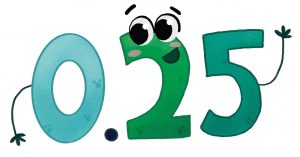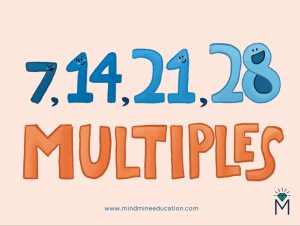The Independent School Entrance Exam, or ISEE, is a test your child may need to take when applying to independent schools in the US. The lower level entrance exam is for students entering grades 5 and 6.
To maximize test scores, your student should begin preparing for the lower level ISEE in the spring and summer to be fully prepared for testing in the fall or winter. Starting earlier in the year will help your student build better study habits, develop a deeper understanding of test concepts, and learn test-taking strategies.
The quantitative reasoning and mathematics achievement sections cover a broad range of topics, including advanced concepts that may be new to even the brightest students. Before venturing into these more advanced topics, it’s crucial to secure a strong foundation in the basics.
As an ISEE test prep tutor, I recommend focusing on these 5 key math skills and concepts for Lower Level ISEE students to master by the summer before they take the exam.


Multiplication and division facts up to 12
For 4th and 5th grade students, multiplication and division facts have been practiced for years. It’s extremely important for your student to have a quick and automatic recall of these facts because calculators are not allowed while taking the lower level ISEE. All computations must be done quickly whether on paper or mentally.
While doing homework and taking tests, students may develop various strategies to retrieve or recreate these facts. During the ISEE mathematics achievement and quantitative reasoning sections, students only have approximately 1 minute per question.
The questions are designed to allow time for reasoning and problem-solving, but if students need additional time to recall multiplication or division facts, they will run out of time before the section is complete.
Mastering multiplication and division facts can be done by practicing, and there are countless ways to do this. Using multiple modalities can help students remain engaged and motivated.
I’ve outlined some of my favorite practice resources here.

Decimal place values up to the thousandths place
Lower Level ISEE students should have a strong grasp of decimal place values up to the thousandths place. For many students, this may be a concept that’s not fully integrated yet, so it’s essential to build true understanding..
To get the most out of ISEE test prep, the student should be able to
- Name the decimal place values, such as tenths, hundredths, and thousandths.
- Understand the meanings of each decimal place value.
For example, they should know that when a number is in the tenths place, that number can be written as a fraction with 10 as the denominator. This knowledge will also help when converting between fractions and decimals.

Area and perimeter for squares and rectangles
Another math concept that Lower Level ISEE students should master is area and perimeter for squares and rectangles. These concepts will be tested in more complex ways on the exam, so your student needs to have a solid understanding of them.
The student should be able to:
- Calculate the area and perimeter of squares and rectangles
- Understand the difference between the two concepts
A single problem may require them to work between both concepts.
For example, one problem could ask students to determine the perimeter when given the area or vice versa. Another problem might ask to solve for missing side lengths when given the area or perimeter. If your student thoroughly understands these concepts, he or she will be better equipped to handle the quantitative reasoning and mathematics achievement sections on the Lower Level ISEE test.

Equivalent fractions
Mastering equivalent fractions is critical because it supports many other topics that use fractions, such as fraction/decimal conversions, ratios, and probability.
Students should be able to:
- Spot equivalent fractions quickly
- Understand that all fractions have many equivalents
This will improve testing agility.
Answer choices that contain fractions are almost always simplified fractions, so it’s imperative that students are able to recognize equivalent fractions to select the correct answer.
In solving word problems with multiple steps, students will often arrive at a fraction that is not simplified. If they are less confident in their understanding of equivalent fractions they may fail to recognize the equivalents in the answer choices even though their fraction is correct.

Factors and multiples
A solid understanding of factors and multiples, as with equivalent fractions, can improve a student’s speed and agility during the Lower Level ISEE test. The two concepts can often be confused, so it’s worth taking the time to differentiate them.
For example: 2 x 3 = 6.
6 is a multiple of 2 and a multiple of 3.
2 and 3 are the factors of 6.
Most ISEE practice tests and materials feature the full variety of practice questions for the exam, so the strategy for strengthening these foundational skills will require a more targeted approach. I often use practice materials from websites like IXL.com and Mathworksheets4kids.com, as well as books from Scholastic and Flashkids.
The Lower Level ISEE math sections cover a multitude of topics with varying degrees of difficulty. Mastering these 5 foundational concepts first can help students better navigate the easy to medium questions, and strengthen their ability to tackle the more challenging topics covered in the harder questions. Building these foundations takes time, so it’s smart to start practicing in the spring or summer before the exam to ensure peak performance.
If you’re not sure where to start or you have questions about Lower Level ISEE test prep, get in touch.